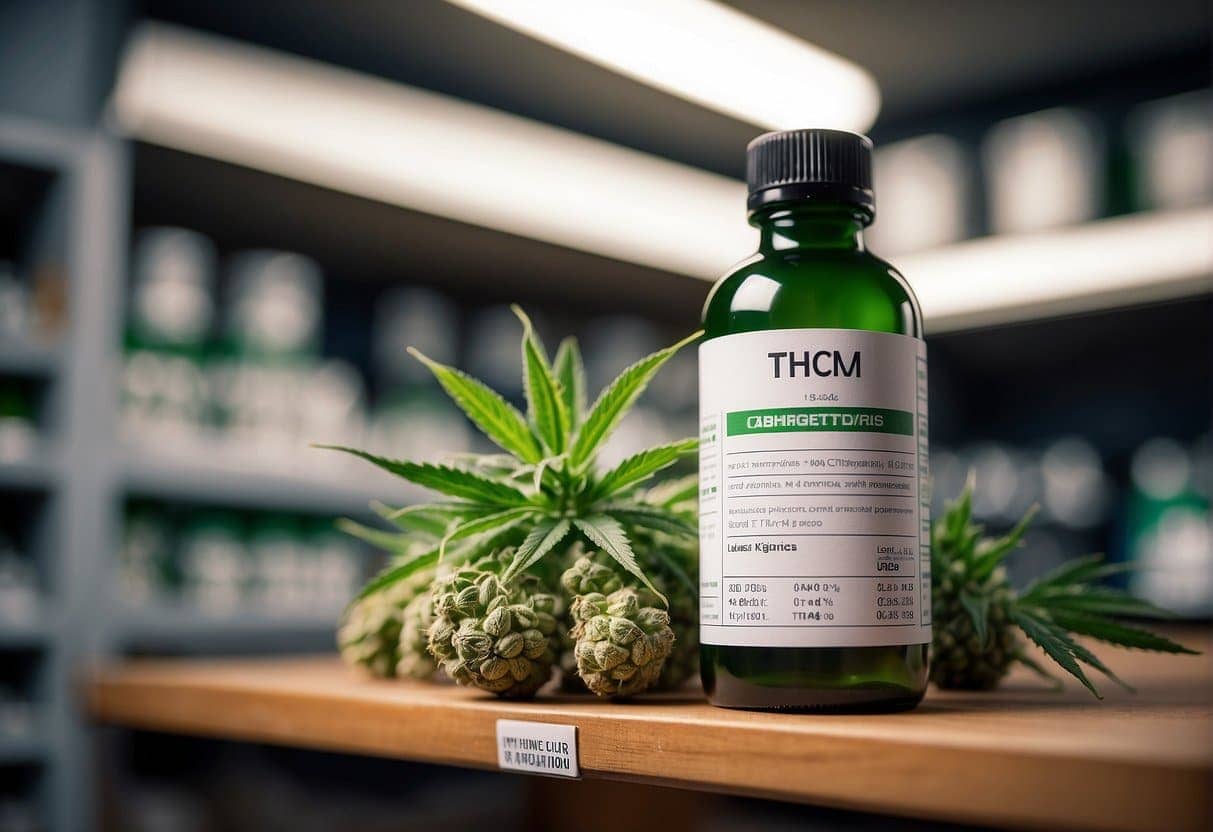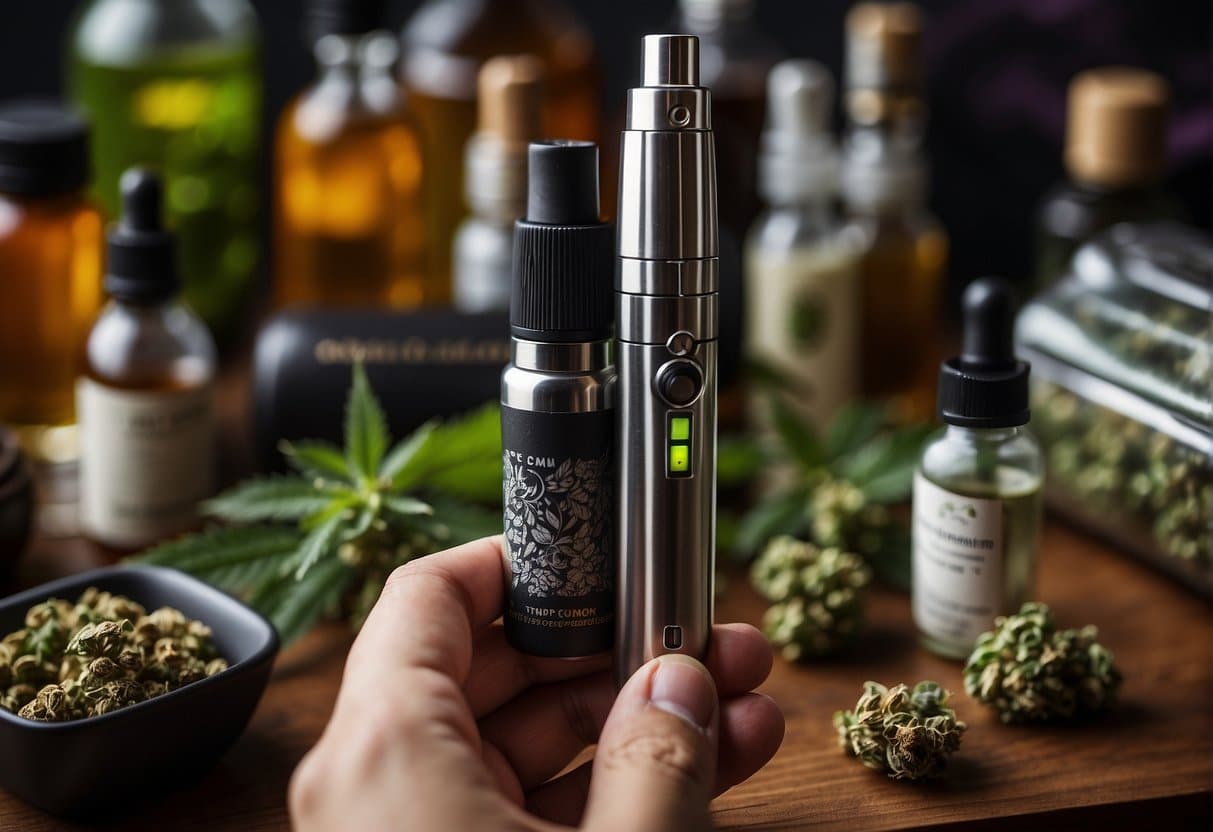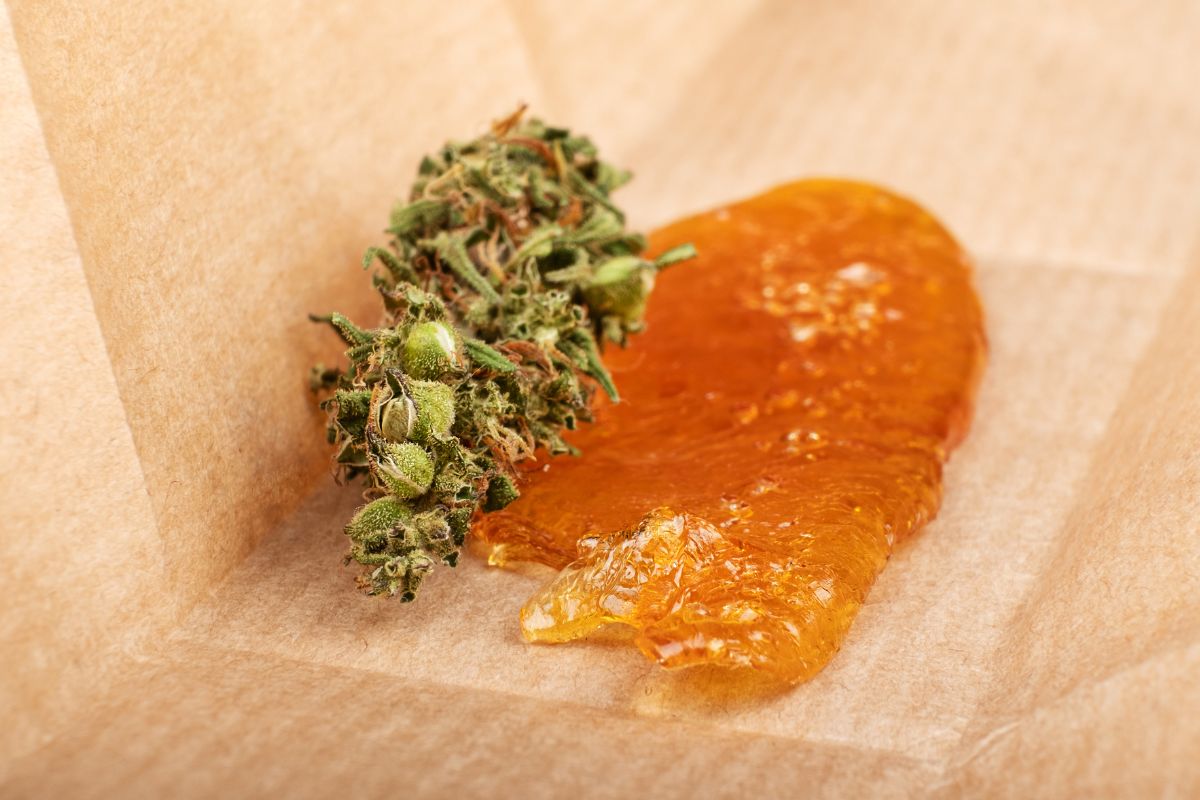THCM Cannabinoid: Unveiling Its Potency and Effects
Jump right into the spellbinding world of cannabinoids, the magical touch that makes the cannabis plant truly shine. Ever discovered THCM cannabinoid? This rare find, hidden deep within the cannabis galaxy, dances with our body’s receptors like best buds from way back. Think of it as the cool, less-known cousin of THC and CBD, adding its unique sprinkle of wellness and mystery. THC grabs all the headlines, sending people into fits of laughter, while CBD keeps things mellow, easing stress without the high. THCM? It’s the mysterious figure in the cannabis narrative, avoiding the spotlight yet possibly holding the key to new health revelations. Craving a dive into the cannabis plant’s hidden treasures? Then, discovering THCM could be your thrilling new quest. It’s like cracking open a secret passage in a video game, leading to new secrets and paths in the vast world of cannabis. Stick around to discover a piece of cannabis magic that could change the scene for both fans and experts.
- Chemical Structure and Classification
- Potential Effects and Psychoactivity
- Legal Status
- Usage and Consumption Methods
- Health and Safety Considerations
- Market and Consumer Demand
- Research and Developments
- Manufacturing and Quality Control
- Frequently Asked Questions
- How does the strength of THC-M compare to Delta 8?
- What effects can be expected from using THC-M?
- What are the potential psychoactive properties of THC-M?
- How does THC-M compare to THC-P in terms of potency?
- Can THC-M be consumed through vaping, and if so, what should users be aware of?
- In the lineup of cannabinoid compounds, where does THC-M stand in terms of strength?
With the evolving spectrum of medical cannabis, researchers have identified new cannabidiol homologs such as THCM, which might offer unique effects thanks to its distinct molecular structure. Although cannabis and hemp have been used for millennia for both recreational and medicinal purposes, it is only in recent years that the complexity of the plant’s cannabinoid portfolio has been extensively studied. This includes understanding the impact of different cannabinoids on your endocannabinoid system—a biological system that plays a key role in maintaining your body’s homeostasis.
While THC is prominent for its mind-altering effects, the therapeutic properties of cannabinoids like THCM are becoming a focal point of scientific inquiry. The medical use of cannabinoids continues to advance, with recognition of their potential to alleviate symptoms in a variety of conditions. It is important for you to be aware that despite these promising developments, the exact mechanisms through which THCM and other cannabinoids exert their effects are not fully understood and research is ongoing. As such, the scientific community remains engaged in uncovering the nuances of cannabinoids like THCM and their potential contributions to health and wellness.
Chemical Structure and Classification
Before exploring the specifics of THCM, it’s important for you to understand that it is a natural constituent of some cannabis varieties and shares a close chemical relationship to its more famous counterparts, THC and its analogs.
Comparison with Other Cannabinoids
Cannabinoids such as THC (tetrahydrocannabinol) and THCa (tetrahydrocannabinolic acid) are well-known compounds from the cannabis plant. THCM, or Δ9-tetrahydrocannabidiol monomethyl ether, differentiates from THC in its molecular structure; it possesses an additional methyl group. This subtle yet significant variation impacts the compound’s properties and effects. THCM’s molecular formula is closely related to other cannabinoids, such as THC-P (tetrahydrocannabiphorol), a naturally occurring but less common cannabinoid with a longer alkyl side chain, which can substantially increase its affinity for the cannabinoid receptors in your body. While THC is the most abundant and studied cannabinoid due to its psychoactive effects, cannabinoids like THCM are gaining attention for their unique effects and potential benefits.
THCM Isolation and Synthesis
The isolation of THCM from cannabis involves a meticulous process to ensure purity and effectiveness. The compound is typically extracted and purified using advanced chromatographic techniques. You’ll find that both natural and synthetic methods can be implemented for its synthesis. Natural isolation involves selecting a cannabis variety that contains THCM as a natural constituent and then performing a precise extraction. Meanwhile, synthetic production can be used to create identical compounds in a controlled environment, ensuring a consistent and pure isolate. This scientific approach becomes particularly crucial for research on THCM’s pharmacological effects. The synthesis may tailor the structure of the molecule for specific therapeutic applications, making it a versatile tool in cannabinoid research.
Potential Effects and Psychoactivity
When examining THCM, a cannabinoid closely related to THC, it’s essential for you to understand its psychoactive properties, how it compares to THC, and its interaction with your body.
Psychoactive Properties
THCM, which stands for delta-9-tetrahydrocannabimovone, has been identified in cannabis and may display psychoactive properties. Research suggests that THCM can bind to your body’s cannabinoid receptors, but the extent of its psychoactive effects compared to THC requires further investigation.
Comparison with THC and Other Psychoactive Compounds
THCM is one of many cannabinoids found in Cannabis sativa. Unlike well-known psychoactive compounds like THC, which are known to produce a high, the impacts of THCM are not yet fully understood. However, it is generally thought that THCM could induce psychoactive effects at high concentrations, similar to THC but potentially differing in potency or profile.
Body Interaction
Cannabinoids like THCM interact with your body’s endocannabinoid system. This interaction largely determines the psychoactive effects experienced. While THC’s effects are more documented, asserting that THCM can produce a comparable high is speculative without more extensive research on its body interaction.
Legal Status

When considering the legal status of THCM, it’s essential to understand that the context can vary significantly between federal and various state laws. The 2018 Farm Bill also plays a critical role in defining the legality of cannabinoids derived from industrial hemp.
Federal and State Laws
Federal law classifies cannabinoids as Schedule I substances under the Controlled Substances Act, making their legality a complex issue. However, cannabinoids derived from industrial hemp, which contain no more than 0.3% THC on a dry weight basis, are not considered controlled substances due to provisions in the 2018 Farm Bill. As for specific states, laws can diverge from federal regulations. For instance:
- Alaska: Industrial hemp with less than 0.3% THC is legal, aligning with federal standards.
- Arizona: Follows the Farm Bill, allowing industrial hemp and its derivatives.
- Arkansas: Permits the sale of hemp-derived cannabinoids in accordance with the Farm Bill.
- Colorado: Known for its progressive stance, it legalizes industrial hemp and related compounds.
- Delaware: Compliant with federal law, industrial hemp products are legal here.
- Hawaii: Accepts the legality of industrial hemp as outlined by federal directives.
- Idaho: Strict restrictions exist; no THC or its isomers, including THCM, are permitted.
2018 Farm Bill Implications
The introduction of the 2018 Farm Bill marked a turning point for industrial hemp and its derivatives. It removed hemp, defined as cannabis and its derivatives with extremely low concentrations of delta-9-tetrahydrocannabinol (less than 0.3% by dry weight), from the definition of marijuana in the Controlled Substances Act. Consequently, cannabinoids from industrial hemp are deemed legal at the federal level, though state laws may impose additional restrictions. Always check your state’s regulations because they can dictate the legality of THCM in your area.
Usage and Consumption Methods

As you explore the world of THCM, a relatively new addition to the cannabinoid market, understanding the various products and their methods of consumption is crucial for a safe and optimal experience.
Common Forms of THCM Products
THCM (tetrahydrocannabihexol) products come in several forms, catering to different preferences and needs. Strains high in THCM can be discovered in select dispensaries, with varying potencies and effects. You can usually find them labeled according to their specific strain names, indicating the particular characteristics of the plant.
Vaping and Smokeables
Vaping THCM offers a quick onset of effects, with vape cartridges being a popular choice. These cartridges contain concentrated THCM oil derived from cannabis smoke and are used with compatible devices. Another method is smoking flower that has been specifically cultivated for its THCM content. However, while both methods involve smoke, it’s worth noting that inhaling cannabis smoke can have health risks.
Oral and Edible Options
Edibles represent a smoke-free option, providing a longer-lasting effect as THCM is metabolized through digestion. THCM can be found in a variety of edible product types, including gummies, chocolates, or beverages. When consuming THCM in edible form, start with a small amount to gauge its strength and your tolerance, as the effects can take longer to manifest compared to vaping or smoking.
Health and Safety Considerations
When considering the cannabinoid THCM, it’s essential to understand its side effects, potential risks, and the specific considerations that should be taken into account for certain populations. It’s crucial to examine lab reports for purity and to be aware of contaminants that could affect your health.
Side Effects and Risks
Adverse reactions to THCM may include anxiety, pain, and disruptions in sleep patterns. Always review the product’s safety profile in lab reports which should detail any toxic substances and side effects observed.
- Anxiety: Some individuals may experience heightened anxiety levels.
- Pain: Though often used for pain management, THCM might cause discomfort in some cases.
- Sleep: Changes in sleep quality or disturbances could occur.
Considerations for Certain Populations
Cannabis Use During Pregnancy: It’s generally advised to avoid cannabis-derived compounds such as THCM during pregnancy due to risks associated with in-utero exposure.
- Pregnant Individuals: Cannabis compounds can cross the placental barrier, potentially leading to developmental issues.
- Vulnerable Populations: People with a history of substance use or severe health conditions should consult healthcare professionals before using THCM.
Ensure that any use of THCM is informed by accurate, reliable information and remains aligned with your particular health needs.
Market and Consumer Demand
The landscape of the THCM cannabinoid market is shaped by ever-evolving consumer preferences and the availability of innovative products. You’ll notice that certain trends dictate the market’s direction, while consumer choices hinge on specific attributes like potency and strain.
Market Trends and Popularity
The demand for THCM is on the rise, reflecting a broader trend toward embracing lesser-known cannabinoids for their unique effects. Brands are capitalizing on this trend by introducing diverse products ranging from oils to edibles. You’ll find a variety of product options on various websites, each offering detailed information about the strain, terpenes, and potency. The popularity of specific products often indicates market trends, such as an increased interest in high-terpene profiles which enhance both the flavor and the potential entourage effect of cannabinoids.
- Topical Products: Gaining traction for their localized effects.
- Vaporizers: Popular for their convenience and discretion.
Consumer Preferences and Usage
When it comes to consumer preferences, the focus is largely on the experience, which is influenced by both potency and strain-specific attributes. Users are leaning towards products that offer clarity on their terpene content, seeking personalized experiences—whether that be for relaxation or stimulation.
- Experience-seekers: Opting for high-potency options for a stronger effect.
- Wellness-focused consumers: Gravitating towards strains with specific terpenes known for therapeutic potential.
Consumers are also increasingly diligent about the origins and quality of the THCM products they choose, often turning to lab-tested products from reputable brands. This emphasis on quality assurance reflects a maturing market where you, as a consumer, demand transparency and safety alongside efficacy.
Research and Developments

Your understanding of tetrahydrocannabinol monomethyl ether, or THCM, expands as researchers relentlessly study the cannabis plant’s intricate chemical profile. Acknowledging THCM’s potential as a biomarker or potentiator in therapeutic contexts, the scientific community delves deeper into understanding its properties and possible applications.
Recent Studies on THCM
Recent laboratory research has unveiled a previously unknown n-hexyl homolog of cannabidiol, cannabidihexol, which suggests a broader spectrum of compounds within Cannabis sativa with varying properties. One study, in particular, has identified THCM’s antinociceptive activity in mice, hinting at its possible use in pain management. You can explore this finding in detail in the research article titled Identification of a new cannabidiol n-hexyl homolog in a medicinal cannabis variety with antinociceptive activity in mice: Cannabidihexol.
Meanwhile, an updated review on Cannabis sativa bioactive compounds has further dissected the nuances of THCM’s role within the cannabis plant. Among the list of compounds studied, THCM tracked interest due to its unique properties. This exploration is available for your perusal in the article discussing Cannabis sativa bioactive compounds and their extraction, separation, purification, and identification technologies.
Future Research Directions
The trajectory of THCM-related research aims to better understand its pharmacological effects and therapeutic potential. Future research directions include:
- Establishing THCM’s efficacy and safety profile in clinical settings.
- Exploring its interaction with other cannabinoids to assess synergistic effects.
- Developing precise extraction and quantitative analysis methods for research purposes.
Scientists also seek to define the compound’s role as a biomarker for both medicinal and recreational cannabis use, which could spearhead advancements in drug testing and regulatory frameworks. As the lab continues to be the nexus for these developments, your comprehension of THCM’s future scope is bound to deepen with each new study unveiled.
Manufacturing and Quality Control

When you delve into the cannabis industry, specifically regarding compounds like Δ9-tetrahydrocannabinol monomethyl ether (THCM), you must understand the critical role of extraction processes and lab testing to ensure the purity and quality of the product.
Extraction Processes
To isolate THCM, numerous extraction methods may be applied. You often see CO2 extraction, recognized for its efficiency in separating compounds from the hemp plant. Extraction quality directly influences the cannabinoid profile of the resulting hemp derivatives. For peak quality, you must adhere to stringent standards where operating conditions are closely monitored, including temperature and pressure settings.
Lab Testing and Purity
After THCM is extracted, it’s vital that lab reports confirm its purity and absence of contaminants. Labs equipped with advanced testing equipment like Gas Chromatography or High-Performance Liquid Chromatography offer detailed insights into cannabinoid profiles. You can trust these comprehensive lab tests to detect any impurities or trace solvents, ensuring the extract meets relevant quality standards.
Frequently Asked Questions
When exploring the different cannabinoids, THC-M’s effects and potency are frequently queried. This section addresses common inquiries about THC-M, offering clear and reliable information.
How does the strength of THC-M compare to Delta 8?
The potency of THC-M is generally perceived as stronger than Delta 8, providing a more intense experience, though individual reactions can vary.
What effects can be expected from using THC-M?
You may experience heightened psychoactive effects when using THC-M. These can include altered perception, euphoria, and other typical THC-related effects.
What are the potential psychoactive properties of THC-M?
THC-M is known to possess psychoactive properties, which could be more potent compared to other THC variants, potentially leading to stronger cognitive and physical effects.
How does THC-M compare to THC-P in terms of potency?
While both THC-M and THC-P are potent cannabinoids, THC-P is typically referenced as one of the most potent with a binding affinity to cannabinoid receptors that’s several times higher than that of THC-M.
Can THC-M be consumed through vaping, and if so, what should users be aware of?
Yes, THC-M can be vaped. Users should be mindful of the concentration and start with a low dosage due to its potency as well as ensure they are using safe, quality products.
In the lineup of cannabinoid compounds, where does THC-M stand in terms of strength?
Among the cannabinoid compounds, THC-M stands as a highly potent option, often surpassing the strength of traditional THC and other analogs, except for a few like THC-P.







